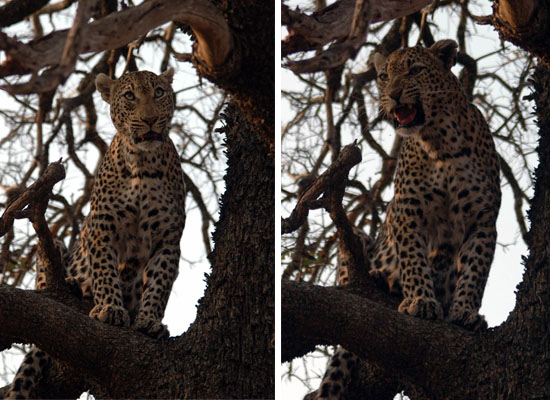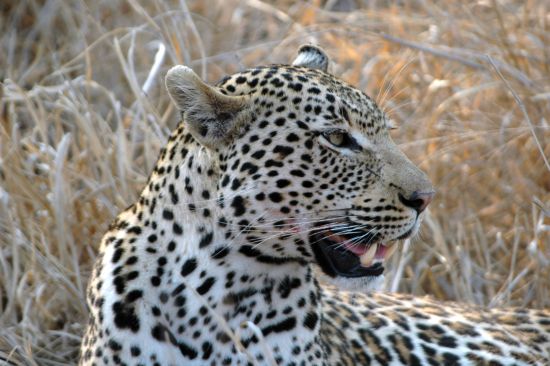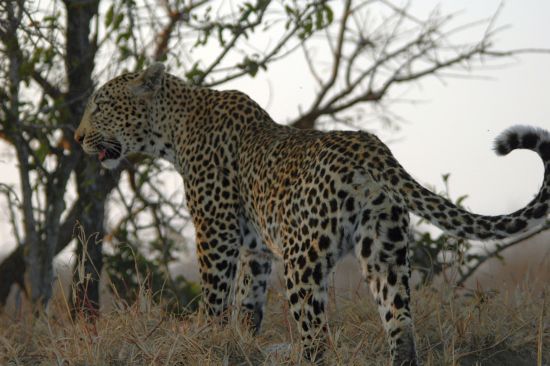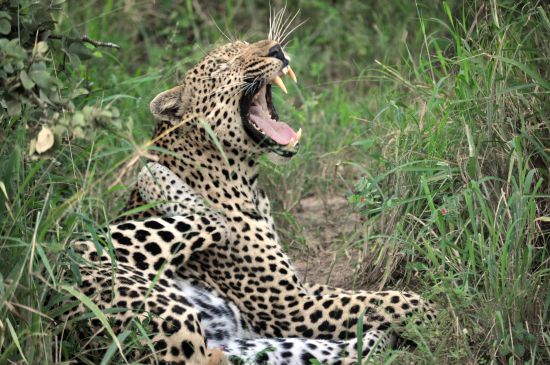
When you start researching your African Safari, the term “Big 5″ often comes up. The term Big 5 was coined by big-game hunters and quickly became known as the most dangerous animals to hunt on foot, and the name stuck – although now ‘shooting’ is done through a camera lens. So the Big 5 are not called the Big 5 because of their size! The Big 5 are five of Africa’s greatest wild animals – lion, leopard, elephant, Cape buffalo and rhino.

As during the bygone hunting era the term “Big Five” still conjures up the romance and excitement of Africa’s exotic destinations and experiences. Images will begin playing in your mind: lions roaring; elephants trumpeting; buffaloes lurking in long grass; rhinos standing stately under a thorn tree; leopards prowling in the gathering darkness.
Many travellers regard a visit to Africa as incomplete without having spotted, and perhaps photographed, the Big Five – legends of the wilderness which have become synonymous with Africa. According to Wikipedia, Countries where all the members of the big five can be found include Botswana, Zambia, Uganda, Namibia, Ethiopia, South Africa, Kenya, Tanzania, Zimbabwe, Democratic Republic of the Congo, and Malawi.

Richard has compiled a list of facts about each of the Big 5 that he personally found fascinating whilst on safari in Africa. In this post Richard shares his favorite fast facts about leopards. Leopards are that one animal that everybody wants to see – beautiful, charismatic, sexy and dramatic – but also the most elusive, due to their solitary nature.
- Leopards can leap 20 feet an can jump 10 feet vertically.
- Both lions and hyenas will steal the leopard’s kill if they can. To prevent this act leopards will store their larger kills where they can enjoy feeding in relative safety.
- The leopard’s tail is almost as long as the length of their body. The tail helps with balance when climbing a tree as well as when chasing prey.

- A leopard can reach speeds of 35 miles per hour.
- A male leopard can weigh up to 200 lbs. Females weigh up to 100 lbs.
- A leopard’s spots (called rosettes) are circular in East Africa but square in southern Africa.
- A leopard can carry prey 3x its own weight up a tree.

- Leopards live for 10 – 12 years in the wild and up to 20 years in captivity.
- Leopards do not growl. Rather they make coarse grunting sounds.
- Leopards have been sighted close to the peak of Kilimanjaro which is 20,000 feet.

Richard has more than 12 years of personal travel in Africa, in addition to guiding and planning trips and itineraries for his clients. He has seen and experienced most of Southern and East Africa and is continuously staying up to date and researching the latest news, lodges, accommodation and travel logistics. If you need advice or a chat….. just ASK RICHARD!
A couple of years ago Richard was headed to Chitwa Chitwa in the Sabie Sands in South Africa. This magnificent leopard appeared and strolled along next to the vehicle. Really hard to get a better leopard sighting than this – and we hadn’t even checked into the lodge! Watch the video below. Africa…In Your Wildest Dreams.
Southern Sky Adventures
Specializing in guided and self-drive trips through Southern and East Africa & the Indian Ocean Islands
721 Woodward Way, NW, Atlanta, GA 30327 USA
404.300.9630 office – 770.324.0068 cell
Website: www.southernskyadventures.com
![]()
![]()
All images ©Richard Pace -taken personally in Africa on safari


